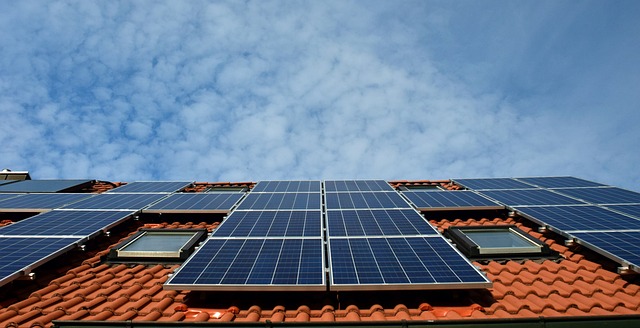Introduction
The MEA solar inverter market is expected to see substantial growth by 2025, fueled by increasing demand for renewable energy, supportive government policies, and advancements in solar technology. As the Middle East and Africa (MEA) region pushes towards sustainable energy solutions, solar power is emerging as a key player in the region’s energy mix. Solar inverters, which convert direct current (DC) from solar panels into alternating current (AC) for use in homes and businesses, are crucial to harnessing the full potential of solar energy. This article explores the anticipated growth, key drivers, and emerging trends in the MEA solar inverter market by 2025.
Market Growth and Projections
The MEA solar inverter market is expected to experience a steady growth rate over the next few years, with a projected compound annual growth rate (CAGR) of around 12% by 2025. As governments in the region make significant strides in diversifying their energy sources, the adoption of solar power is becoming more prevalent. The market for solar inverters, which plays a central role in the functioning of solar systems, is poised to reach $1.5 billion by 2025.
The rise in solar installations across countries like Saudi Arabia, the UAE, South Africa, and Egypt will significantly drive the demand for solar inverters. With solar energy becoming an increasingly cost-effective and reliable source of power, these countries are investing heavily in solar projects to meet growing energy demands while reducing their reliance on fossil fuels.
Key Market Drivers
- Government Policies and Incentives A significant driver for the MEA solar inverter market is the growing number of government initiatives and incentives aimed at boosting the adoption of renewable energy. Several countries in the region have set ambitious solar energy targets as part of their vision for cleaner, more sustainable energy systems. For example, Saudi Arabia’s Vision 2030 outlines plans to generate a significant portion of the country’s energy from renewable sources, with solar power at the forefront.
Incentives such as subsidies, tax credits, and low-interest loans are encouraging both residential and commercial solar energy adoption. As these policies continue to evolve, they will provide a steady boost to the solar inverter market.
- Increasing Demand for Renewable Energy As the MEA region moves away from its reliance on oil and gas, there is a noticeable shift towards renewable energy sources, especially solar power. The region’s high solar irradiance and vast, unutilized land make it ideal for large-scale solar installations. As a result, there is a growing demand for solar inverters to optimize solar energy capture and distribution, enabling energy-efficient homes, businesses, and industries.
The adoption of solar power as a green energy alternative is not only driven by environmental considerations but also by the need to address energy security and reduce energy costs.
- Technological Advancements Technological innovation in solar inverters is making them more efficient, affordable, and reliable. Features like smart inverters, which can optimize the performance of solar systems, and energy storage integration are becoming more common. These advancements improve the overall efficiency and reliability of solar power systems, driving the demand for more sophisticated inverters in the region.
Additionally, with the integration of Internet of Things (IoT) technologies, solar inverters are becoming smarter, enabling real-time monitoring and management of energy production and consumption. This further fuels the adoption of solar inverters in both residential and commercial sectors.
- Private Sector Investments The MEA region is witnessing increasing investment from both local and international players in the solar energy sector. Private sector participation is helping drive solar energy adoption through public-private partnerships, large-scale solar projects, and investments in solar technology.
As the cost of solar technology continues to decrease, it becomes more accessible for businesses and homeowners to adopt solar power solutions. This has led to a surge in demand for solar inverters, which are integral to maximizing the energy efficiency of solar power systems.
Emerging Trends in the MEA Solar Inverter Market
- Focus on Energy Storage Energy storage systems are gaining traction alongside solar inverters as a way to maximize the use of solar power, especially in regions with intermittent sunlight. The integration of batteries with solar inverters is becoming more common, enabling users to store excess energy produced during the day for use at night or during power outages. This trend is expected to drive demand for hybrid solar inverters, which can efficiently manage both solar energy production and storage.
- Commercial and Industrial Applications While residential solar installations remain popular, there is a notable shift towards commercial and industrial solar installations in the MEA region. Businesses and industries are increasingly recognizing the economic benefits of switching to solar energy, including reduced operational costs and a lower carbon footprint. Solar inverters are crucial in ensuring that large-scale solar installations operate at optimal efficiency, making this segment a key growth driver in the market.
- Off-Grid Solar Solutions Many regions in Africa, particularly in rural areas, still face significant energy access challenges. Off-grid solar systems, combined with solar inverters, offer an efficient solution for these communities. As a result, there is growing demand for small-scale, portable solar solutions with inverters that can power homes, schools, and small businesses without relying on the traditional grid infrastructure.
- Fore More Info : – https://www.gmiresearch.com/report/mea-solar-inverter-market/
Conclusion
The MEA solar inverter market is set for significant growth by 2025, driven by government incentives, rising demand for renewable energy, and technological advancements in solar power systems. As solar energy continues to gain traction across the region, solar inverters will play a vital role in ensuring the efficiency and effectiveness of solar installations. Key opportunities exist in sectors such as commercial and industrial solar applications, energy storage, and off-grid solutions. As the region moves toward a more sustainable and energy-efficient future, the demand for solar inverters will remain strong, creating long-term growth potential for manufacturers and suppliers in the market.
Company Name: GMI RESEARCH
Email: enquiry@gmiresearch.com
Address: Dublin, Ireland
Website: https://www.gmiresearch.com/
GMI Research – Consulting & Market Research
